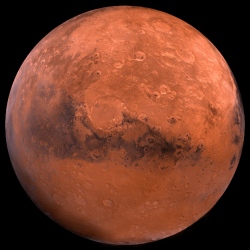
Scientists working on Nasa’s Curiosity rover think they can now explain why there is a huge mountain at the robot’s landing site in Mars’s Gale Crater. They believe it is the remains of sediments laid down in successive lakes that filled the deep bowl, probably over tens of millions of years. Only later did winds dig out an encircling plain to expose the 5km-high peak we see today.
If true, this has major implications for past climates on the Red Planet. It implies the world had to have been far warmer and wetter in its first two billion years than many people had previously recognised. Ancient Mars, says the Curiosity team, must have enjoyed a vigorous global hydrological cycle, involving rains or snows, to maintain such humid conditions.
One tantalising consequence of this is the possibility that the planet may even have featured an ocean somewhere on its surface. "If we have a long-standing lake for millions of years, the atmospheric humidity practically requires a standing body of water like an ocean to keep Gale from evaporating," said Dr Ashwin Vasavada, the Curiosity deputy project scientist.
For decades, researchers have speculated that the northern lowlands could have held a large sea in Mars’ early history. The latest Curiosity results are sure to re-ignite interest in that idea.
